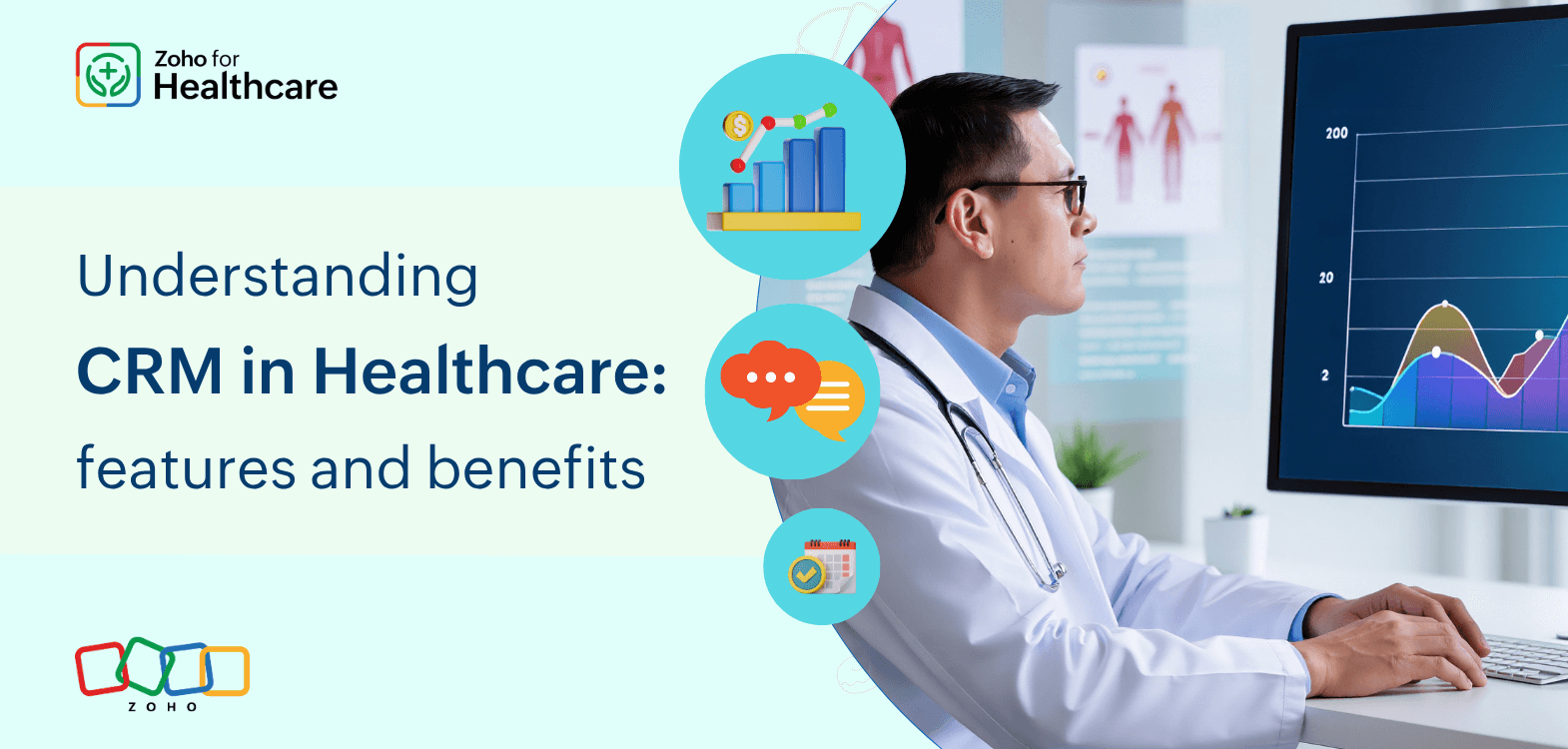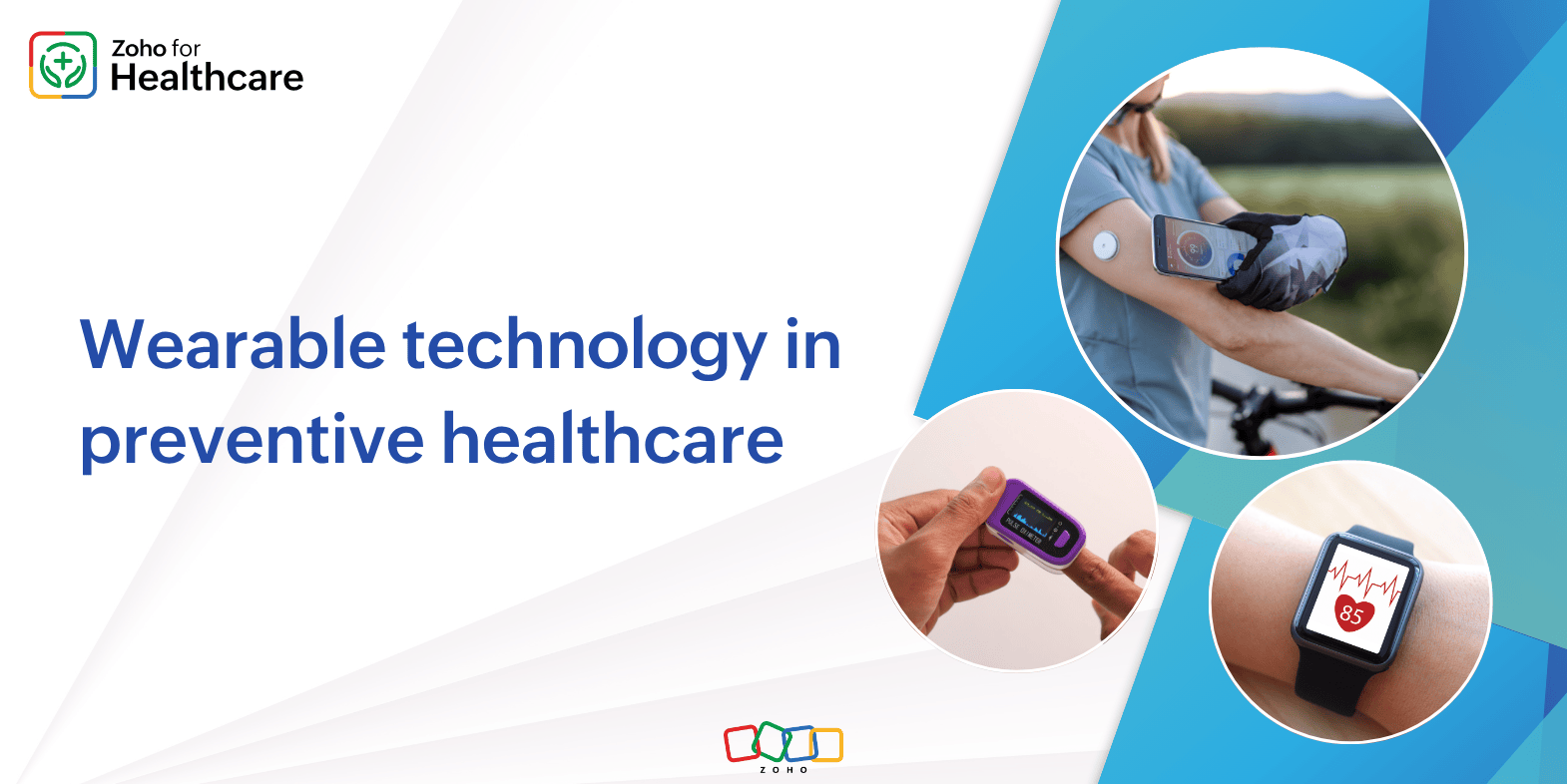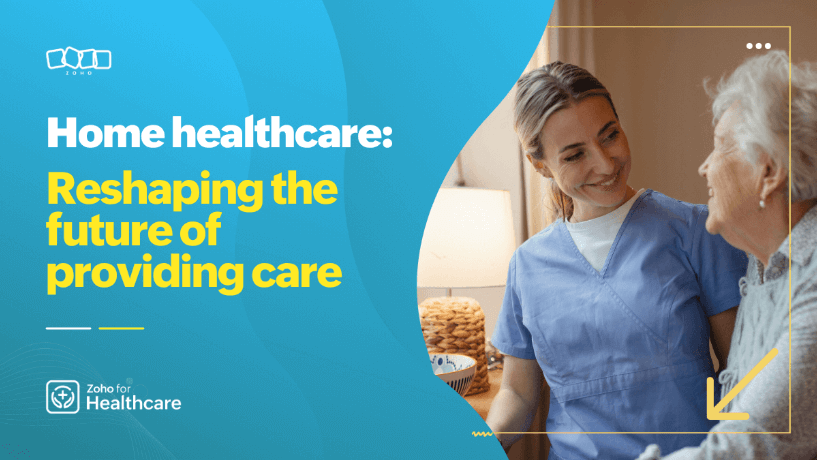- HOME
- Digital Health
- 15 types of essential healthcare software for clinics and hospitals
15 types of essential healthcare software for clinics and hospitals
- Last Updated : September 29, 2025
- 292 Views
- 6 Min Read

Global healthcare systems are undergoing one of their fastest periods of digital adoption, with software becoming critical to daily operations. This shift is transforming how patient care is delivered, measured, and improved. As patient expectations rise and care models grow more complex, care providers are relying on software solutions to stay efficient and responsive.
Healthcare software includes a wide range of tools designed to streamline operations, enhance patient care, and boost overall efficiency. They can be categorized based on the size, function, and focus of the healthcare organization—for example, practice management software for small clinics, hospital management systems for large multi-specialty hospitals, and diagnostic systems for clinical testing and diagnosis.
What is healthcare software?
Healthcare software refers to technology solutions that automate medical processes, store and manage patient data, support clinical decision-making, and improve overall patient care. From electronic health records to telehealth platforms, these tools help providers deliver faster, safer, and more coordinated care.
In this blog post, we break down 15 essential types of healthcare software that help providers, administrators, and decision-makers identify the right solutions for their practice.
15 types of healthcare software
1. Electronic health records (EHRs): EHR software replaces paper-based medical records, allowing healthcare providers to store, manage, and share patient information as a single digital record. It typically includes patient demographics, medical history, medications, allergies, lab results, and more.
2. Practice management software (PMS): PMS focuses on the day-to-day administrative operations of a medical practice, such as patient registration, appointment booking, data management, and billing, helping clinics simplify operations and deliver smoother patient experiences.
3. Hospital management systems (HMS): HMS is a comprehensive software solution that integrates administrative, financial, and clinical functions of an entire hospital. They manage various hospital operations, including patient admissions, bed allocation, inventory control, staff scheduling, and other core processes to improve efficiency and care coordination.
4. Healthcare CRM: A dynamic tool that helps clinics and hospitals manage leads and patient relationships by tracking interactions, follow-ups, and communication across channels. It streamlines patient outreach, appointment scheduling, feedback collection, and marketing campaigns, boosting engagement and retention while reducing administrative effort.
5. Appointment booking software: This is widely used by front desk receptionists and clinic administrators to automate scheduling, rescheduling, and cancellations while tracking doctor availability in real time. It eliminates manual checks and reduces administrative workload for front-desk staff and clinic administrators.
6. Telehealth software: These platforms enable remote consultations and monitoring of patients through video conferencing, secure messaging, and other digital tools. They make care accessible for patients in rural areas or those with limited mobility.
7. Remote patient monitoring (RPM): RPM technology allows providers to track patients’ vital signs and other health data outside a traditional clinical setting. This supports remote assessment, early intervention, and helps prevent hospital readmission.
8. E-prescribing software: E-prescription tools let providers generate and transmit prescriptions to pharmacies, reducing handwriting errors and improving medication management.
9. Medical imaging software: These specialized computer programs help clinicians view, analyze, and manage diagnostic images such as X-rays, CT scans, and MRIs, supporting accurate diagnoses and treatment planning.
10. Medical diagnosis software: Powered by AI and machine learning, these systems analyze patient data, from medical histories to lab reports, to assist healthcare professionals in diagnosing potential conditions based on various data inputs and recommending next steps.
11. Medical billing software: Billing platforms automate the claims process from submission to payment tracking, ensuring accurate coding, timely reimbursements, and fewer administrative errors.
12. Laboratory information system (LIS): LIS solutions are used in a clinical setting to manage the entire lab workflow, such as patient check-in, sample collection, test tracking, quality control, and result reporting, ensuring accuracy and faster turnaround times.
13. Pharmacy management systems: This software digitizes and automates daily pharmacy operations, including prescription management, inventory control, billing, insurance processing, and patient records.
14. Patient portals: These are secure online platforms that give patients 24/7 access to their personal health information, medical records, lab results, prescriptions, and billing information, while enabling direct communication with healthcare providers.
15. Analytics and business intelligence: BI tools analyze large volumes of healthcare data to identify trends, predict outcomes, and guide decision-making in areas like population health management, resource allocation, and financial planning.
These are some of the examples that represent the core software solutions driving modern healthcare. Specialized systems, such as clinical decision support tools and medical research databases, continue to emerge as technology advances. Another rising trend is the use of health tracking apps, which allow patients to monitor their physical and mental well-being, track medications, and share progress with care providers, fostering engagement and proactive care.
As innovation accelerates, hospitals and clinics can expect even more sophisticated platforms to improve patient outcomes and transform the delivery of care.

The benefits of implementing healthcare software
For healthcare organizations
Operational efficiency: Healthcare organizations looking to improve their operational efficiency can automate repetitive tasks like scheduling, billing, and reporting, which will reduce administrative overload and free up staff time.
Lower cost: Replacing traditional paper-based systems with digital solutions minimizes paperwork and lowers billing errors, helping hospitals and clinics save resources. These solutions also streamline billing processes, and the improved efficiency can lead to significant cost savings while ensuring better operations.
Enhanced security: Healthcare software offers robust security features to protect sensitive patient data and maintain compliance with healthcare privacy regulations. This also protects patient privacy and prevents data breaches.
Easier scalability: Flexible systems make it easier to expand services, open new branches, or add specialties without overhauling existing infrastructure.
Data-driven decision-making: Built-in analytics and dashboards help decision-makers allocate resources, plan staffing, and improve financial and operational strategies.
For admins
Simplified workflows: Automation administrative processes reduces manual data entry and repetitive tasks, making day-to-day management more efficient.
Accurate reporting: Real-time dashboards and analytics give administrators quick access to important metrics for to make faster and informed decisions.
Regulatory compliance: Built-in security and audit trails help administrators stay compliant with healthcare privacy and data-protection requirements.

For healthcare providers
Quick access to patient data: Centralized electronic records give providers an instant, comprehensive view of a patient’s history, test results, and treatments.
Reduced medical errors: Digital records minimize manual data entry, provide accurate diagnosis, and flag potential issues like drug interactions or allergies, helping providers deliver safer, more accurate diagnoses.
Efficient workflow: Automation of tasks like record-keeping, prescription management, billing, and digital referrals saves time, allowing them to focus more on patient care.
Improved communication: These solutions facilitate secure data sharing between different healthcare providers, ensuring better coordinated care for patients.
Enhanced collaboration: Interconnected systems allow seamless sharing of information across departments and providers. This doesn’t delay access to patient records and delivers timely treatment.

For patients
Convenience and accessibility: Patients can book appointments, view test results, pay bills, and consult doctors through online portals or mobile apps at any time.
Personalized care: Providers can track health trends, manage chronic conditions, tailor treatments, and provide personalized care based on up-to-date digital records, reducing misdiagnosis and improving outcomes.
Improved engagement: Easy access to health records, prescriptions, bills, and health data fosters trust and boosts patient engagement. Patients can also easily communicate with providers through virtual consultations and portals.
Key challenges of implementing these software
Cost of implementation: Deploying software involves more than just purchasing a license. It includes other expenses like infrastructure upgrades, staff training, and maintenance. Clinics and hospitals often have complex workflows and require customized implementation. These institutions with multiple specialties should carefully evaluate whether the solution delivers measurable ROI across all departments.
Staff training and adoption: Doctors, nurses, and administrative staff may be hesitant to adopt new systems due to fear of disruption, unfamiliarity with technology, or concerns about an increased workload during the transition. Effective onboarding, including hands-on training sessions, is critical to help users gain confidence and fully leverage the software’s capabilities.
Interoperability: Healthcare organizations prefer different systems for various functionalities and workflows. These platforms may not communicate seamlessly, making it difficult for integration and data exchange between different departments or facilities.
Data migration: Transferring large volumes of patient data from legacy systems to a new platform is a complex, time-consuming process prone to errors if it’s not carefully managed. Proper planning and testing are essential to ensure data integrity.
Data security and compliance: Healthcare software manages sensitive patient information, making data breaches and unauthorized access significant risks. Organizations must implement strong security measures and comply with regulations such as HIPAA to safeguard patient privacy and maintain legal compliance.
Wrapping up
Healthcare software has become an integral part of the modern health system, optimizing operations, improving clinical accuracy, and enhancing patient experiences. From patient registration to discharge, these tools empower hospitals and clinics to deliver faster, safer, and more personalized care.
However, successful implementation goes beyond selecting the right technology and requires careful planning, the willingness to adapt, and robust security measures. By addressing these challenges and choosing solutions that align with their goals, healthcare organizations can unlock the full potential of digital solutions and lay the foundation for better outcomes for both providers and patients.


